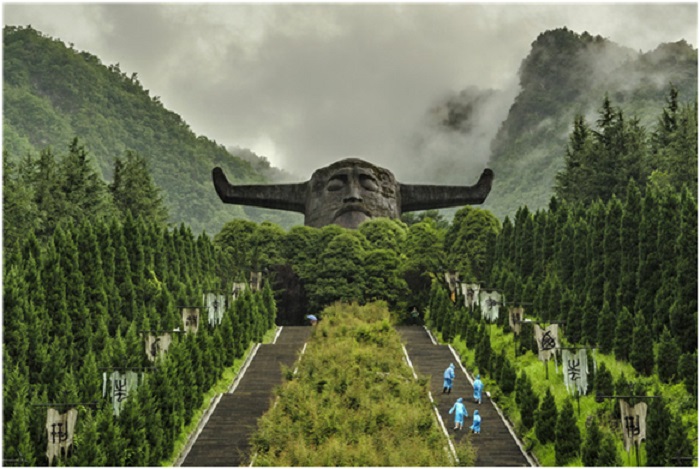



Central China’s Hubei province, the hardest-hit Chinese province in the COVID-19 pandemic, has lately rolled out a free-admission policy on offering domestic visitors free entry to nearly 400 A-level tourist attractions across the province, including the well-known Yellow Crane Tower, or Huanghelou, the Three Gorges Dam, and Shennongjia National Park.
The generous offer shows Hubei’s gratitude for the assistance it has received from various parts of the country since the outbreak of the COVID-19.
After the unexpected outbreak struck Hubei last December, various resources and human forces across the country have been mobilized to support the province’s fight against the virus.
Deeply concerned about the situation in Hubei, people across China donated massive medical supplies and daily necessities to the province. Meanwhile, more than 42,000 medical workers of over 340 assistance teams were dispatched from various regions of the country to Hubei province, creating medical miracles one after another in the battle against the pandemic.
When Hubei started to resume production and work after the pandemic was brought under control and epidemic prevention and control measures started to be carried out on a regular basis around the country, various Chinese cities have continued to lend a helping hand to Hubei, facilitating the province’s efforts to boost social and economic recovery.
While the move of Hubei was made out of appreciation, free-admission to tourist attractions is believed to be an important measure to spur recovery of tourism industry and stimulate consumption potential.
Since the resumption of trans-provincial group tours in China, the country’s tourism sector, which was once brought to a standstill because of the pandemic, has entered a brand new period when normal operations in the industry have been resumed in an all-round manner and favorable policies have been rolled out across the country.
East China’s Shandong province has recently lowered ticket prices for 81 state-owned tourist sites. Chinese regions and provinces including north China’s Inner Mongolia autonomous region and southwest China’s Guizhou province have also reduced ticket prices significantly for tourist attractions.
By lowering ticket prices or offering free admission, scenic spots have effectively enhanced their popularity and boosted the development of business of the whole industrial chain, bringing more customers to businesses which are closely linked with tourism, such as hotels, catering businesses, shopping centers, characteristic shows, as well as entertainment.
Lower ticket prices and the free-admission policy are not only a special move under the current situation, but also a starting point where tourist market can get ready to wean itself off the economic benefits of tickets and become more open and mature.
With China achieving important strategic results in the fight against the pandemic, the country has witnessed continuous growth in tourism figures as the pent-up demand for tours is getting released, which signals a potential acceleration in tourism recovery.
China’s tourist market received over 6 billion person-times of tourists and realized an annual revenue of 6.63 trillion yuan (about $959.4 billion) in 2019, demonstrating a solid foundation for and sound fundamentals of domestic tourist market, according to a report on basic facts about China’s tourist market in 2019 released by China Tourism Academy.
This year, a great number of Chinese people who have planned overseas tours have chosen domestic destinations instead due to the still grim situation of the COVID-19 globally, which leaves huge consumption potential for the country’s tourist market.
Against the backdrop of the normalized epidemic prevention and control, tourism authorities, scenic spots, and enterprises are expected to work harder to explore new business models while ensuring smooth implementation of epidemic prevention and control measures in various links, so as to continue to stimulate consumption and accelerate the recovery of tourism sector.
As the number of visitors surges, services in tourist sites across the country are going to be put to a test since the quality of services has become particularly important in attracting visitors after tourist attractions slashed ticket prices or offered free admission.
Multi-faceted measures have helped Chinese cities gradually improve business in tourist attractions around the country, and eventually bring related businesses such as homestay hotels and restaurants back to the dynamism and vitality they have always enjoyed.
Only by making great efforts to improve supply capacity and service quality of tourist attractions can cities guarantee safe and pleasant trips for tourists, and only through faster development of new products and new forms of business can tourist sites be transformed from the traditional sightseeing areas to comprehensive resorts.
Opportunities can always be found in crises. One gets opportunities after overcoming crises.
By grasping the present opportunities for recovery after the country has contained the spread of the COVID-19, getting rid of the mindsets and development patterns that are not suitable for revitalizing business in the post-epidemic period, and innovating relevant systems and mechanisms that better satisfy market demands and people’s expectations, China’s tourism sector is bound to find new opportunities in the crisis and open up brand new possibilities for development no matter how the global situation changes.


The Humanitarian Service Diamond Awards has.
A Chinese Company, Inner Galaxy Steel.


The Programme Coordinator, Regulatory, Compliance and.


A Non-Governmental Organization (NGO), Committee for.
The Trustfund Pensions Limited has chided.


The House of Representatives Committee on.
The China General Chamber of Commerce.


Senator Chuka Utazi who represented Enugu.


An Abuja based Legal Practitioner, Ugochukwu.


The African business community in Yiwu,.
Leave a Comment